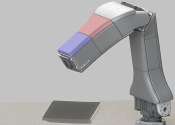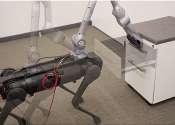Aerial robot that can morph in flight
French researchers have drawn inspiration from birds to design an aerial robot capable of altering its profile during flight. To reduce its wingspan and navigate through tight spaces, it can reorient its arms, which are equipped ...
Jun 1, 2018
0
46









